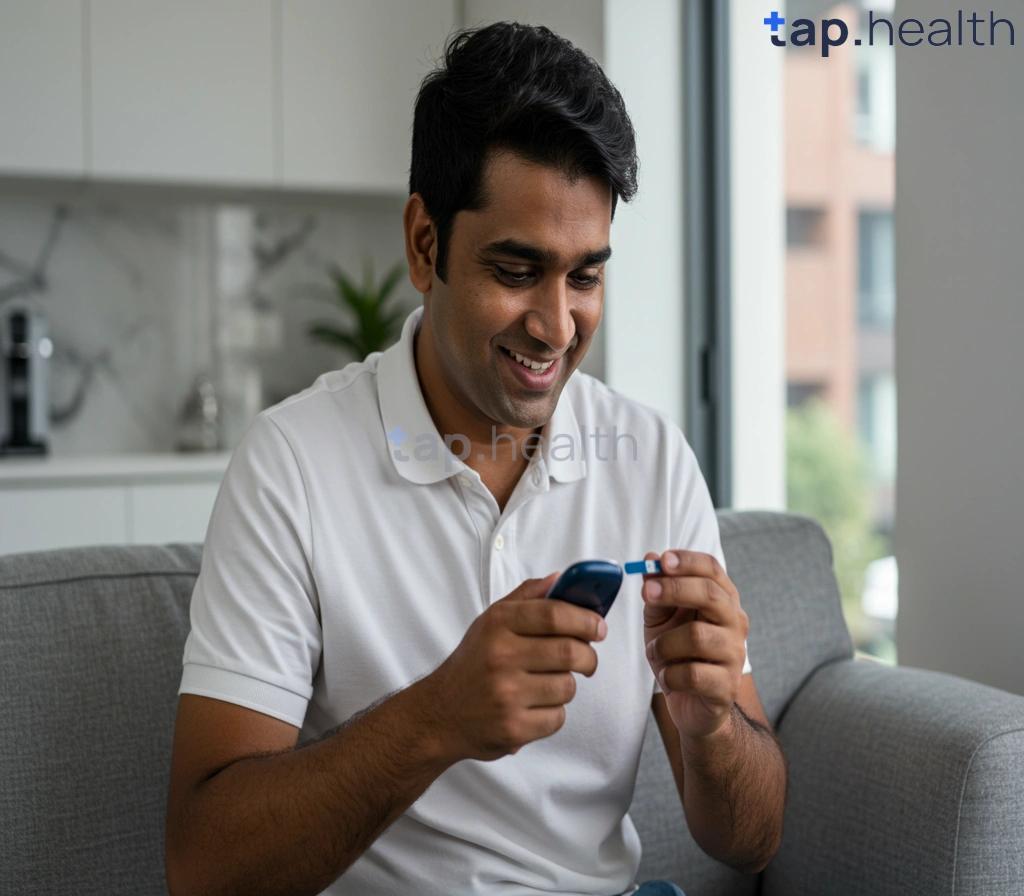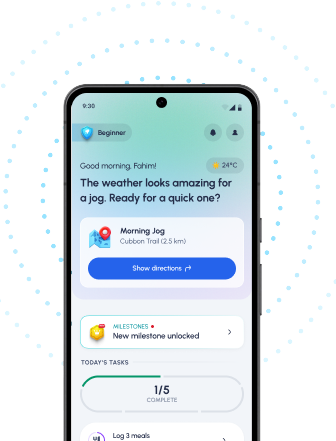Table of Contents
- Best Exercises for Diabetes Management
- Top Physical Activities to Control Blood Sugar
- Easy Ways to Incorporate Exercise into Your Diabetes Routine
- A Guide to Safe and Effective Workouts for People with Diabetes
- What Type of Exercise is Best for Managing Diabetes?
- Frequently Asked Questions
- References
Living with diabetes can feel like navigating a complex maze, but finding the right path to better health is absolutely achievable. One of the most powerful tools in your diabetes management arsenal is regular physical activity. This blog post is all about helping you discover the best physical activity options to Boost Your Diabetes Management. We’ll explore various exercises suitable for different fitness levels and discuss how incorporating movement into your routine can significantly improve your blood sugar control, energy levels, and overall well-being. Ready to start feeling stronger and healthier? Let’s dive in!
Best Exercises for Diabetes Management
Managing diabetes effectively requires a holistic approach, and physical activity plays a crucial role. Considering that 61% of people with diabetes are aged between 20-64 years, finding enjoyable and accessible exercises is key. For those in India and tropical countries, choosing activities that account for the climate is vital. Regular exercise helps improve insulin sensitivity, manage weight, and reduce the risk of complications. For more information on the vital role of exercise, check out our article on Why Regular Exercise is Essential for Diabetes Management.
Finding the Right Fit
The best exercises for diabetes management are those you’ll stick with. Think about your fitness level, preferences, and the climate. In hot and humid climates, like those prevalent in many Indian and tropical countries, opt for activities that minimize exertion during the hottest parts of the day. Early morning or evening workouts are generally preferred.
Effective Exercise Options
Walking, swimming, and cycling are excellent low-impact options suitable for people of all ages and fitness levels. These activities are easily adaptable to different intensities and can be done in various settings. Yoga and Tai Chi, popular in many parts of India, are also beneficial for improving balance, flexibility, and stress management – all important factors in diabetes control. For those aged 20-64, higher-intensity interval training (HIIT) may also be considered, but always consult your doctor first. Remember to stay hydrated, especially in warmer climates.
Staying Consistent
The key to successful diabetes management through exercise is consistency. Aim for at least 150 minutes of moderate-intensity aerobic activity per week, spread across several days. Even short bursts of activity throughout the day can add up and make a significant difference. Remember to consult your doctor or a certified fitness professional before starting any new exercise program, especially if you are over 65, as this age group (constitutes 39% of those with diabetes), may have specific needs. For additional tips on managing your diabetes effectively, see our article: 10 Proven Tips for Effective Diabetes Management.
Making it a Habit
Start with small, achievable goals and gradually increase the intensity and duration of your workouts. Join a local fitness group or find an exercise buddy for added motivation and support. Remember, managing your diabetes is a journey, and incorporating regular physical activity is a crucial step towards a healthier and happier life. Consult a healthcare professional in your region to create a personalized exercise plan suited to your needs and local conditions.
Top Physical Activities to Control Blood Sugar
Managing diabetes effectively requires a holistic approach, and regular physical activity plays a crucial role in controlling blood sugar levels. Studies show that even small changes can make a big difference; for instance, daily consumption of sugary beverages raises diabetes risk by 26%. Therefore, incorporating suitable physical activity into your daily routine is essential. Choosing activities that you enjoy is key to maintaining a consistent exercise regimen, especially in hot and humid climates prevalent in many Indian and tropical countries.
Best Exercises for Tropical Climates
Consider the climate when choosing your activities. High-intensity workouts in intense heat can be risky. Instead, opt for activities that are less strenuous but still effective. Walking, especially early mornings or evenings when temperatures are cooler, is a fantastic option. Swimming is another excellent choice, providing a full-body workout while staying cool. Yoga and Tai Chi are also beneficial, improving flexibility, balance, and stress management – all contributing factors to better diabetes control. Remember to stay hydrated throughout your workout.
Adapting to the Region
For individuals in India and tropical countries, incorporating culturally relevant activities can be motivating. Think about dance forms like Bharatnatyam or Bollywood dance, which provide cardiovascular benefits along with cultural immersion. Even simple chores like gardening or household cleaning can contribute to daily physical activity. The key is to find what works best for you and stick to it.
Making it a Habit
Start slowly and gradually increase the intensity and duration of your workouts. Listen to your body and rest when needed. Consistency is more important than intensity; even short, regular bursts of activity are better than sporadic intense workouts. Consult your doctor or a certified fitness trainer to create a personalized exercise plan tailored to your specific needs and health conditions. Remember, maintaining a healthy lifestyle, including regular physical activity, is crucial in managing diabetes effectively. For additional support in managing your blood sugar, consider exploring natural remedies by reading our article on Top 8 Natural Remedies to Improve Blood Sugar Levels. Creating sustainable habits is key, and you can learn more about that in our guide on How to Build Habits That Help Control Blood Sugar Levels.
Easy Ways to Incorporate Exercise into Your Diabetes Routine
Managing diabetes effectively often involves careful attention to diet and exercise. While managing carbohydrate intake—generally aiming for 45–60 grams per meal, though this varies depending on individual needs—is crucial, regular physical activity plays an equally vital role in controlling blood sugar levels. It’s not about intense workouts; it’s about consistent, manageable movement. In hot and humid climates prevalent across India and tropical countries, this requires a slightly different approach.
Finding Activities that Suit You
Consider the climate. High-intensity interval training (HIIT) might be less suitable during the hottest parts of the day. Instead, prioritize activities that you can comfortably sustain in the heat, such as early morning or evening walks, yoga, or swimming. These are readily accessible and adaptable exercises. Remember to stay hydrated by drinking plenty of water before, during, and after your workout.
Making it a Habit
Start small. Aim for at least 30 minutes of moderate-intensity exercise most days of the week. This could be a brisk walk in your neighborhood, cycling, or even house chores like gardening, which can be surprisingly effective. Gradually increase the intensity and duration as your fitness improves. Find an exercise buddy for motivation and accountability. In many Indian communities, group activities are common—consider joining a walking group or a local fitness class. For more tips on effective diabetes management, check out 10 Proven Tips to Effectively Manage Diabetes | Simple Guide.
Adapting to the Environment
The heat and humidity of tropical climates can pose challenges. Schedule your workouts for cooler parts of the day, wear light, breathable clothing, and choose shaded areas for outdoor activities. Listen to your body; if you feel overheated, stop and rest. Prioritize consistency over intensity, especially when starting. By incorporating these simple changes, you can effectively manage your diabetes and improve your overall well-being. Making even small lifestyle changes can have a big impact, as highlighted in 5 Easy Lifestyle Changes to Manage Type 2 Diabetes.
A Guide to Safe and Effective Workouts for People with Diabetes
Managing diabetes effectively requires a holistic approach, and regular physical activity is a cornerstone of that strategy. For individuals in Indian and tropical countries, choosing the right type of exercise is crucial, considering the climate and lifestyle factors. The prevalence of diabetes is a significant concern, with approximately 35 per 10,000 U.S. youths diagnosed with the condition, according to the CDC. This highlights the urgent need for accessible and culturally relevant information on diabetes management.
Choosing the Right Activities
In hot and humid climates, high-intensity workouts can be risky. Opt for activities that are less strenuous during the hottest parts of the day. Early mornings or evenings are ideal. Walking, swimming, and yoga are excellent choices, offering low-impact exercise that’s easily adaptable to different fitness levels. Consider incorporating traditional Indian exercises like yoga and pranayama, which can improve insulin sensitivity and stress management. Remember to stay hydrated throughout your workout and replenish electrolytes lost through sweat.
Safety First
Before starting any new workout routine, consult your doctor. They can help you create a safe and effective plan tailored to your specific needs and health condition. Monitor your blood sugar levels before, during, and after exercise, adjusting your insulin or medication as needed. Always carry a snack containing fast-acting carbohydrates, such as glucose tablets, to manage hypoglycemia (low blood sugar). Listen to your body and rest when needed. It’s also important to understand how exercise impacts your heart health, so check out our guide on Protect Your Heart from Diabetes: 5 Essential Steps for more information.
Staying Motivated
Finding enjoyable activities is key to long-term adherence. Consider joining a local walking group, taking a yoga class, or finding a workout buddy for added support. Remember that even small amounts of physical activity are beneficial. Aim for at least 30 minutes of moderate-intensity exercise most days of the week. Building a sustainable routine tailored to your environment and preferences is crucial for effective diabetes management in Indian and tropical countries. If you’re planning any travel, remember to check out our tips on Traveling with Diabetes: Essential Tips for a Safe & Healthy Journey to ensure a smooth and healthy trip.
What Type of Exercise is Best for Managing Diabetes?
Managing diabetes effectively requires a holistic approach, and regular physical activity is a cornerstone. For women in India and tropical countries, this is especially crucial, given the 40% higher risk of heart disease compared to men with diabetes. Choosing the right type of exercise is key to maximizing benefits and minimizing risks in hot and humid climates.
Finding the Right Fitness Routine
The best exercise for diabetes management is one you’ll enjoy and stick with consistently. Consider activities that are low-impact and suitable for the climate. Walking, yoga, and water aerobics are excellent options. These minimize strain on joints while improving cardiovascular health and insulin sensitivity. In warmer climates, early mornings or evenings are ideal to avoid the midday heat.
Adapting to the Environment
Remember to stay hydrated, especially during outdoor activities. Wear light, breathable clothing and use sunscreen to protect your skin. Listen to your body and take breaks when needed; avoid strenuous activity during peak heat hours. Consider incorporating shorter, more frequent exercise sessions into your daily routine instead of long, intense workouts. This approach is particularly beneficial for managing blood sugar levels throughout the day. Managing your diet is also crucial, and you might find Low-Carb vs. Moderate-Carb Diets for Diabetes: What Works Best? helpful in understanding dietary approaches.
Prioritizing Your Health
Regular exercise helps manage blood sugar, improve cardiovascular health, and contribute to overall well-being. Start slowly, gradually increasing the intensity and duration of your workouts. Consult your doctor or a certified diabetes educator before starting any new exercise program to ensure it’s tailored to your specific needs and health condition. Remember, consistency is key in managing diabetes and improving your quality of life. Find an activity you enjoy and make it a regular part of your day! Furthermore, managing cholesterol is vital for overall cardiovascular health, so you may also want to read How to Manage Cholesterol Levels with Diabetes?
Frequently Asked Questions on Diabetes Management
Q1. What is the most important thing to know about physical activity and diabetes management?
Regular physical activity is crucial for managing diabetes. It improves insulin sensitivity and helps reduce diabetes-related complications.
Q2. What types of exercise are best for managing diabetes, especially in hot climates like India?
Low-impact activities like walking, swimming, yoga, and Tai Chi are great options for all ages and fitness levels. In hot climates, exercising early in the morning or in the evening is recommended. Higher-intensity interval training (HIIT) might be suitable for those aged 20-64, but always consult your doctor first, especially if you’re over 65.
Q3. How much exercise do I need to do each week to effectively manage my diabetes?
Aim for at least 150 minutes of moderate-intensity aerobic activity per week. Even short bursts of activity throughout the day can be helpful. It’s best to start slowly and gradually increase the intensity and duration of your workouts.
Q4. I’m new to exercise. How do I get started safely and effectively?
Start with achievable goals and gradually increase the intensity of your workouts. Consider joining group fitness activities for motivation and support. Always consult your healthcare professional to create a personalized exercise plan that’s safe and effective for you.
Q5. When should I consult a doctor before starting a new exercise program for diabetes management?
It’s always recommended to consult your doctor before starting any new exercise program, especially if you have any underlying health conditions or are over 65. They can help you create a safe and effective plan that meets your individual needs.
References
- A Practical Guide to Integrated Type 2 Diabetes Care: https://www.hse.ie/eng/services/list/2/primarycare/east-coast-diabetes-service/management-of-type-2-diabetes/diabetes-and-pregnancy/icgp-guide-to-integrated-type-2.pdf
- What is Diabetes: https://www.medschool.lsuhsc.edu/genetics/docs/DIABETES.pdf




